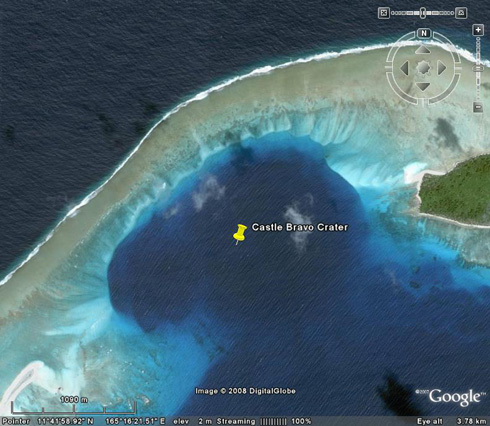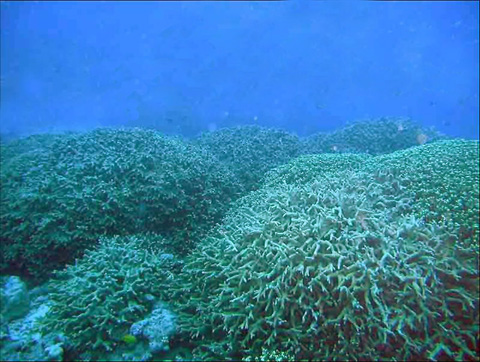Corals are always quite photogenic, but pretty as these examples are, what’s most fascinating is where these things are growing: in one of the craters left by the US nuclear testing on Bikini Atoll in the 1940s and 1950s.

Castle Bravo Crater was excavated by a 15 megatonne nuclear bomb in 1954, and it was recently visited by a team of divers from the Australian Research Council Centre of Excellence for Coral Reef Studies as part of a study of how the atoll is recovering from the effects this and the other Bikini nuclear tests. From the Centre’s press release:
After diving into the crater, Zoe Richards of the ARC Centre of Excellence for Coral Reef Studies and James Cook University says, “I didn’t know what to expect – some kind of moonscape perhaps. But it was incredible, huge matrices of branching Porites coral (up to 8 meters high) had established, creating thriving coral reef habitat. Throughout other parts of the lagoon it was awesome to see coral cover as high as 80 per cent and large tree-like branching coral formations with trunks 30cm thick. It was fascinating – I’ve never seen corals growing like trees outside of the Marshall Islands.
“The healthy condition of the coral at Bikini atoll today is proof of their resilience and ability to bounce back from massive disturbances, that is, if the reef is left undisturbed and there are healthy nearby reefs to source the recovery.”
However the research has also revealed a disturbingly high level of loss of coral species from the atoll. Compared with a famous study made before the atomic tests were carried out, the team established that 42 species were missing compared to the early 1950s. At least 28 of these species losses appear to be genuine local extinctions probably due to the 23 bombs that were exploded there from 1946-58, or the resulting radioactivity, increased nutrient levels and smothering from fine sediments.
“The missing corals are fragile lagoonal specialists – slender branching or leafy forms that you only find in the sheltered waters of a lagoon,” Zoe explains. While corals in general have shown resilience, Zoe adds that the coral biodiversity at Bikini Atoll has proven only partially resilient to the disturbances that have occurred there.
We all know that what should have happened is that the diving team vanished without a trace, leaving behind only grainy footage of an attack by mutated giant cnidarians, but I suppose that this is the next best thing. More pictures can be found here.
Categories: environment




Comments (14)